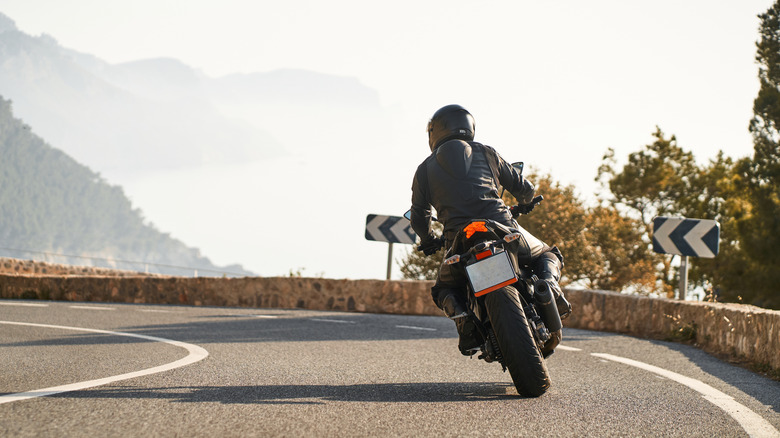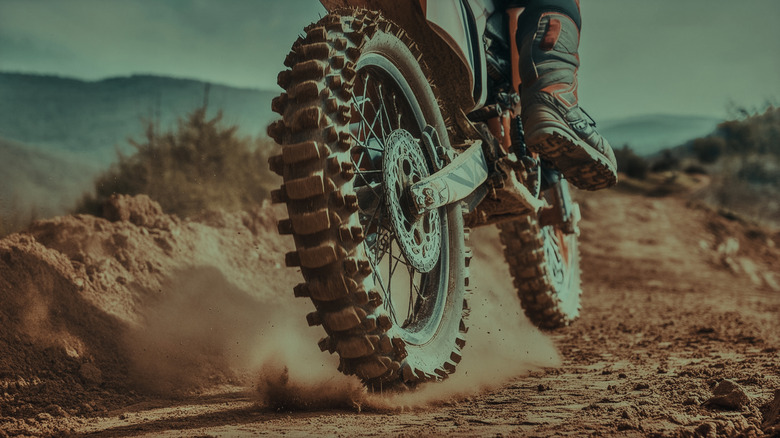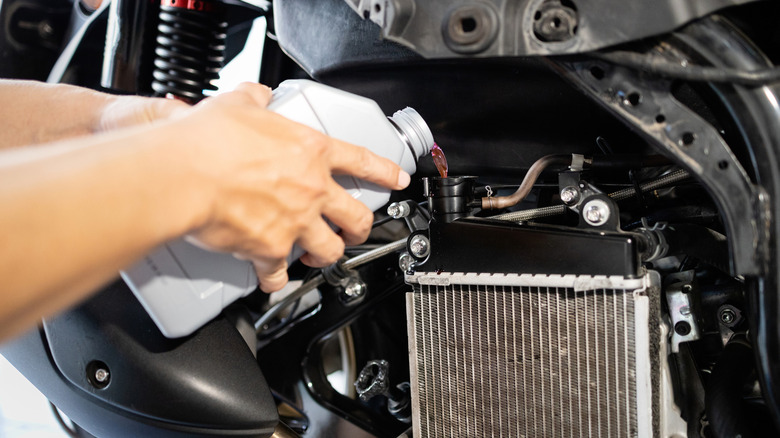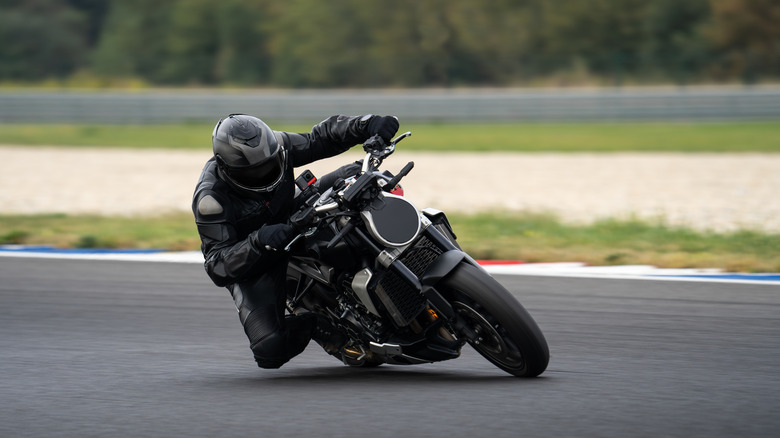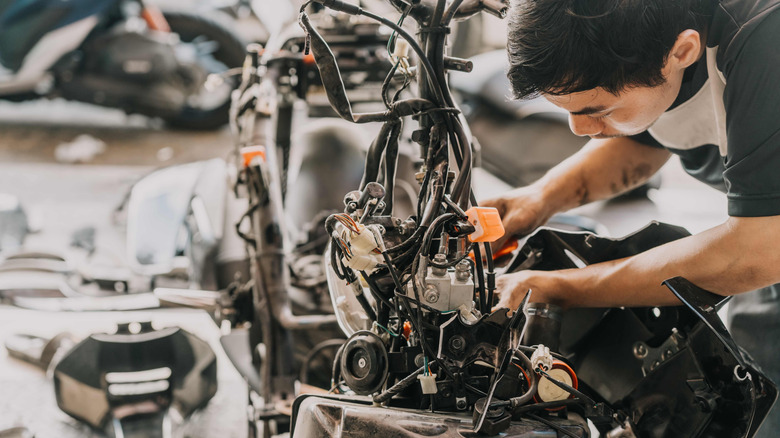4 Pros & Cons Of Riding A Motorcycle With A Slipper Clutch
Motorcycle riders often face split-second decisions, especially at high speeds or when an unexpected obstacle appears. One of the common mistakes people make when riding a motorcycle in these situations is to hit the brakes, which shifts weight to the front, causing the front wheel to lock up and leading to a loss of control. As an avid motorcycle enthusiast, I've encountered my fair share of these challenges during my years riding a 2012 Kawasaki Ninja 300.
When going at high speeds, the best way to deal with an obstacle is to apply the brakes and shift to a lower gear. But what if you have less time and need to shift down, say, three gears? In these moments, rapid downshifting can put a huge strain on your transmission and rear wheel, as well as put your safety at risk. I learned firsthand how important the slipper clutch technology can be.
A slipper clutch, also called a back-torque limiter, is technology designed to reduce the effects of engine braking. Initially developed in the 1970s, the slipper clutch technology has become a staple in high-performance bikes. Normal clutches send braking force to the rear wheel via the chain drive and can cause the rear wheel to shake and lose traction. The main point of a slipper clutch is to keep the rear wheel under control during rapid downshifting. My Ninja 300, despite its modest 39 horsepower, could achieve speeds of up to 110 mph, and the slipper clutch was an important part of my road trips. But, what are the pros and cons of riding a motorcycle with the slipper clutch?
Pro: Slipper clutches provide rear-wheel stability
One of the main advantages of slipper clutches is their ability to maintain the stability of the rear wheel during aggressive downshifting. Traditional motorcycle clutches transfer engine braking force directly to the rear wheel, which can lead to locking, skidding, or hopping. This is common in scenarios when the rider brakes hard or shifts down multiple gears at high speeds. These sudden jolts can compromise the rider's control, especially when combined with the front wheel lock-up. In many cases, it can result in a crash, particularly in high-stress situations.
The slipper clutch technology allows the clutch mechanism to partially disengage when the engine braking force becomes too excessive. This slip reduces the torque transferred to the rear wheel, which allows it to rotate more freely and maintain traction. It prevents unexpected jolts and skids, keeping the rider in control until the driving speed matches the engine speed.
Slipper clutches essentially smooth out the transition, whether you're decelerating rapidly or hitting the brakes hard when navigating sharp corners. They are particularly useful on bikes that have high braking force, such as high-horsepower motorcycles, which is why they're commonly used on MotoGP racing bikes.
Con: higher maintenance costs
While a slipper clutch provides stability benefits, one of its primary drawbacks is its cost. On the factory end, slipper clutches are more expensive to manufacture compared to standard clutches. This is because, in addition to the advanced design, they require more parts and components, such as ramps and specialized clutch plates. So a motorcycle with a factory-fitted slipper clutch will be more expensive than one with a standard clutch. And because they are so complicated, maintenance and repairs can be costly.
Over time, wear and tear of intricate components may lead to more frequent servicing compared to traditional clutches, which require an oil change every 4,000 miles or every six months. But with a slipper clutch, you may find yourself servicing your motorcycle two or three times in a year, depending on how often you ride it. This makes upkeep potentially more expensive for riders who use their bike often or push them to the limits.
Pro: enhanced cornering performance
Another benefit of motorcycle slipper clutches is the improved control they provide when navigating tight corners or twisty roads. When you downshift aggressively, the slipper clutch keeps the engine braking force at a level where it doesn't overwhelm the rear wheel, which could otherwise cause it to lose traction and spin out of control. This feature particularly benefits racers because it allows them to enter corners at higher speeds without compromising stability.
A slipper clutch lets riders maintain their desired line in a corner by providing a smoother transition through gears. This eliminates any possible skids or loss of traction. It's very important in high-performance scenarios, where good handling could mean the difference between cutting seconds off a lap time or losing control. For everyday riders, the slipper clutch helps them take on corners more confidently and reduces the risk of accidents caused by a sudden downshift.
Con: They are complex and can't be retrofitted
One downside of the slipper clutch is its complexity. Slipper clutches are intricate and require precise engineering to function correctly. This complexity requires skilled technicians to either install, adjust, or repair. If you own a bike that doesn't come with a slipper clutch, you can't simply retrofit one easily.
As mentioned, this advanced feature is commonly found in higher-end or performance-focused models such as the Suzuki Hayabusa, the Yamaha R1 and Yamaha YZF-R15M, and the Splendour Plus and HF Deluxe from Hero MotoCorp in India. Fitting it to a different motorcycle — particularly a non-performance bike — can be a complex and costly process.
Attempting a retrofit could lead to improper installation. This could result in poor performance or, in the worst cases, damage to your bike's engine and transmission. For some riders, this challenge makes the slipper clutch less appealing, especially if the bike wasn't originally designed to accommodate the system.
